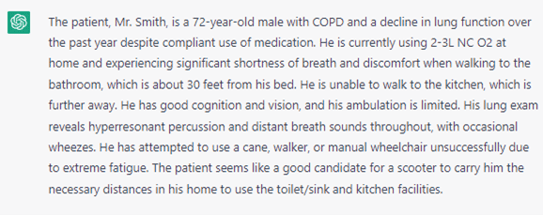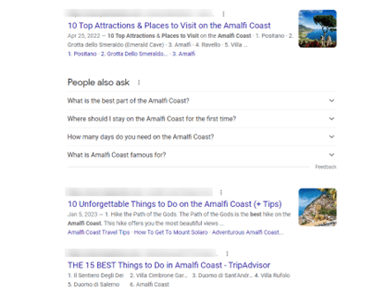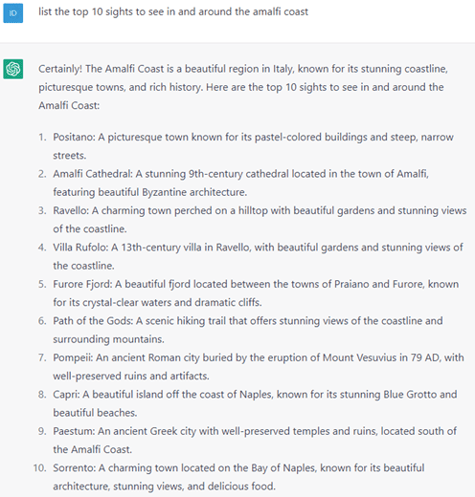You have likely heard of ChatGPT, it's been all over the news. Stories of children and students using it to write essays for them. But, let's go beyond the hype - what can you actually use this model for in a business scenario. If you are not familiar with the capabilities of ChatGPT, read the next section. It ChatGPT's response to the following command:
"write a short blog on use cases for ChatGPT beyond the hype"
Use Cases for ChatGPT Beyond the Hype
ChatGPT, a language model developed by OpenAI, has garnered a lot of attention in recent years for its ability to generate human-like text. While chatbots and virtual assistants are popular use cases for ChatGPT, there are many other applications for this powerful tool beyond the hype.
One potential use case for ChatGPT is in the field of education. The model can be used to generate personalized learning materials for students, such as quizzes, practice problems, and study guides. It can also be used to provide feedback on student work, helping to identify areas where additional study is needed and providing guidance on how to improve.
Another potential use case for ChatGPT is in the field of journalism. The model can be used to generate news articles, summaries, and headlines, allowing journalists to quickly produce high-quality content for their readers. It can also be used to analyze sentiment and identify trending topics, helping journalists to stay on top of breaking news and provide timely coverage.
ChatGPT can also be used in the field of healthcare. The model can be used to generate personalized health advice for patients, based on their medical history and symptoms. It can also be used to analyze medical records and identify patterns, helping healthcare providers to make more accurate diagnoses and develop more effective treatment plans.
In the field of marketing, ChatGPT can be used to generate personalized content for customers, such as product recommendations, marketing emails, and social media posts. It can also be used to analyze customer sentiment and identify trends, helping marketers to tailor their campaigns to the needs and preferences of their target audience.
Finally, ChatGPT can be used in the field of creative writing. The model can be used to generate poetry, fiction, and other creative works, providing inspiration and ideas for writers. It can also be used to analyze existing works and identify patterns and themes, helping writers to improve their craft and create more engaging and impactful content.
In conclusion, while chatbots and virtual assistants are popular use cases for ChatGPT, there are many other applications for this powerful tool beyond the hype. From education and journalism to healthcare, marketing, and creative writing, ChatGPT has the potential to revolutionize a wide range of industries and transform the way we interact with text-based data.
I'm Back
From here on the text is all me, and maybe the copy editors.
So, what are the real strengths of the ChatGPT model? There are 4
- Content Creation
- Summarization
- Code Generation
- Semantic Search
Let's look at the strengths and relate it to real world use cases solving real world business problems.
Content Creation
The obvious business use case here is automated responses to common questions. The responses can be tailored based on the wording of the question. Unlike the public implementation, the Azure OpenAI is entirely private and can be restricted to using a corpus of information that is company confidential.
The natural language processing allows for excellent support options for bots, etc. with a corporate knowledge base as the source of truth. This allows for a much improved user experience beyond the usual "bot" experience, with the ability to reference to previous information, for example "summarize the information above into 4 bullet points."
Summarization
This is an extremely powerful engine that allows for ingesting large documents and having them summarized into bullet points or a table. This is includes complex medical documents. The following image is a summary of a test patient record in HL7 format.

This is an extremely power feature that allows for business processes to be accelerated where long complex documents need to be reviewed. These documents could be financial, medical, or technical in nature. This can also be combined with other Azure Cognitive services, for example, recordings of support calls can be converted to text sentiment analysis performed and then summarized.
We are designing an application to accelerate a medical process that involves the review of scanned forms and medical data. The architecture uses Azure Cognitive Services Form Recognizer to extract the text from the PDF and scanned forms, leveraging OpenAI to improve the accuracy of the data. The medical data record will then be summarized using OpenAI and key questions about medical condition answers. This new process will dramatically reduce the amount of keying in data and the time to review a medical record. It is designed to be an accelerator and not a replacement for human involvement.
One of the great features of OpenAI is the ability to have a "dialogue" regarding information that was summarized.
Code Generation
OpenAI can convert natural language to code in many languages, from HTML, to SQL, to Python, and even Terraform. It can also be used to generate documentation for existing code. This can be combined with the summarization skill, for example to summarize information and then build a SQL statement to insert the data into a table.
The reverse can also be completed, using OpenAI to explain a block of code - this can be very useful when there is little or no comments in code.
Semantic Search
Semantic search is a type of search query that focuses on the meaning behind the words used in a search query. This type of search goes beyond simply matching keywords and considers the context and relationships between words in the query to provide more accurate and relevant results. In other words, it aims to understand the intent behind the search query rather than just the words themselves.
For example, if you search for "list the top 10 sights to see in and around the amalfi coast," traditional search engines such as google will provide a list of websites that match the keywords it identified in the query string.

Compare this to a OpenAI search:

It has understood the intent of the request and provides a top 10 list with brief descriptions of what the attraction is. Now, if this capability is deployed in a corporate setting, productivity can be increased by understanding what the user is trying to find and presenting the information in a concise manner. This can be especially powerful in help desk situations where the user is trying to find information quickly and can use natural language and not have to try to guess the correct keywords based on the user’s problem.
Summary
In conclusion, the OpenAI model has four main strengths that can be applied to real-world business problems: content creation, summarization, code generation, and semantic search. These strengths allow for automated responses to common questions, accelerated review of complex documents, natural language to code conversion, and more accurate and relevant search results based on the intent behind the query. By leveraging the power of OpenAI, businesses can improve their user experience and increase productivity. Want to discuss this topic more or get started with OpenAI for your business? Contact us today!
.png)
